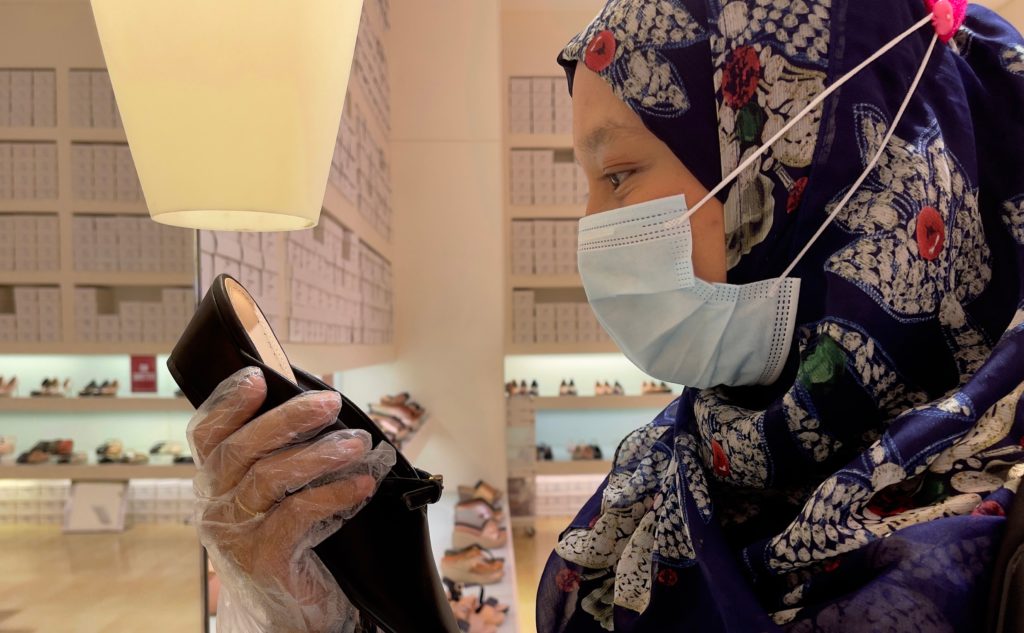Porto Alegre – The Arab countries imported 2.1 million pairs of Brazilian footwear year to date through September for USD 15 million, up 8.6% in volume and down 8% in revenue from a year ago, Brazilian Footwear Association (Abicalçados) said. This gap is due to the change in the average price of Brazilian footwear imported by the Arab countries, which dropped by 15% from USD 8.30 to USD 7.10 a pair. A highlight are the flip-flops, which account for 33% of total exports. The United Arab Emirates currently account for 2.5% of Brazilian footwear exports (in pairs) in the region.

Total footwear exports from Brazil year to date through September hit 86.2 million pairs for USD 618.5 million, up 33.7% in volume and 26.3% in revenue from a year ago. The optimism is explained by the rebound in footwear exports from Brazil to some major global markets like the United States and France.
Haroldo Ferreira, executive president of Abicalçados, says the UAE is a relevant market for Brazilian footwear. In fact, the country was chosen as a priority in the Brazilian Footwear program, which aims to increase and enhance footwear shipments from Brazil to potential buyers. The Arab country is seen as a gateway for the Brazilian product in the Gulf, thus allowing the program to work the region’s countries as one. Over the next term starting in 2022, Brazilian Footwear will develop activities that will see a direct and indirect impact on the region.

Priscila Linck, Market Intelligence coordinator of Abicalçados, explains that the decline in export revenues is related to an adjustment to exchange rate changes. “We’ve seen an appreciation of dollar against real, but the costs of the companies are in reais, so we can cut prices in the global market without losing profit,” she adds.
While prices dropped in Brazil, the average global prices of exported footwear in dollars were up about 3%, mainly driven by some European and Asian countries. Euro and China’s renminbi appreciated against dollar in 2020. Furthermore, the reorganization of supply chains and the increased international freight prices have impacted production costs in most countries.
But countries that have experienced a strong depreciation of domestic currency against dollar like Brazil, Argentina and India managed to cut the average price in dollars, thus retaining profits in their domestic currency. In Brazil’s case, this allowed for a competitive and market share gain in several markets. According to Linck , the price dynamics will depend on the path taken by input prices and other productive and logistics costs, as well as the international exchange rate developments and the change, or not, in the exports baskets of the countries.
Expectations for 2022
For the upcoming year, just like in 2021, exports are expected to be the drive for growth of the footwear industry. According to forecasts by Abicalçados, foreign sales in 2020 could grow by 5.1% in volume, up 7% from 2019. The industry is forecast to export 124 million pairs, up 6 millions from 2021’s forecast. With the result, the export rate – percentage of domestic production exported – would go from 12% to 14%.
Linck ponders that the international market is recovering due to the vaccination rollout and the foreign trade clearance. The year of 2021 is expected to go beyond pre-pandemic levels, with exports up 25% in volume from a year ago.
Results in factories
Without giving numbers, Bibi Calçados, specialized in manufacturing children’s footwear, saw a decline in exports in 2020, mainly due to the closing of stores in most markets the company operates in. Uncertainties regarding the pandemic and social distancing measures impacted business. The domestic demand also saw a decline in 2020, as the entire retail and fashion industry did, impacted by restrictions in social events, in-person classes and closing of stores.

Mateus Giaretta, Exports manager of Calçados Bibi, explains that, although 2021 started with uncertainties, the upturn began slowly and picked up steam in the second half of the year. “We’re forecasting very good results for the end of 2021, with exports up approximately 10% from 2019. Upturns and recoveries in the markets of Latin America, Europe and Middle East boosted business this year.” Every year, the brand produces over 2 million pairs of children’s shoes.
Importers have been very cautious. “The insecurity of retailers and distributors led us all to reinvent ourselves through new ways of consumption, changing through new sales channels and the consumers themselves. For this year, we could notice a higher level of trust from importers,” Giaretta says.
Giaretta says that Bibi didn’t make any move to readjust prices, except for the effects of the depreciation of real against dollar. “This has helped us keep our export prices stable during the year despite the rise in input prices in the domestic market.”
For 2022, an economic upturn is expected across nearly all markets. But facing the logistics gaps remains critical and demands specific strategies for each region of the world. Therefore, market strategies are being drawn for different regions so that different players can be served by different business models. Furthermore, franchise chains have expanded across Latin America and Portugal, and business have spread via distributors to over 70 countries across all continents.
Translated by Guilherme Miranda




